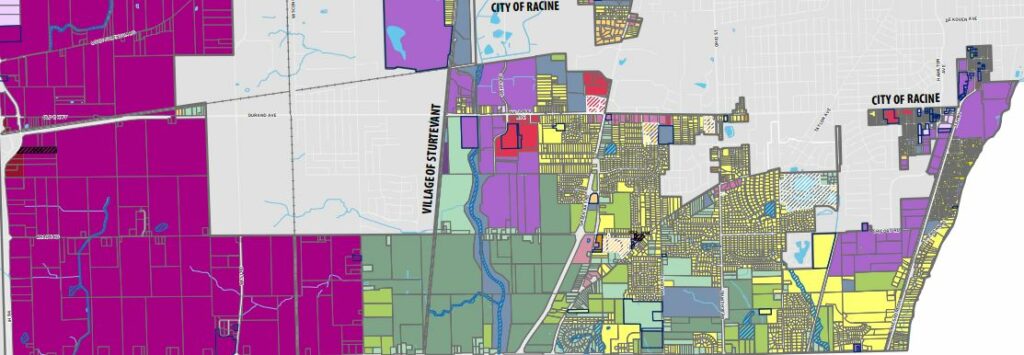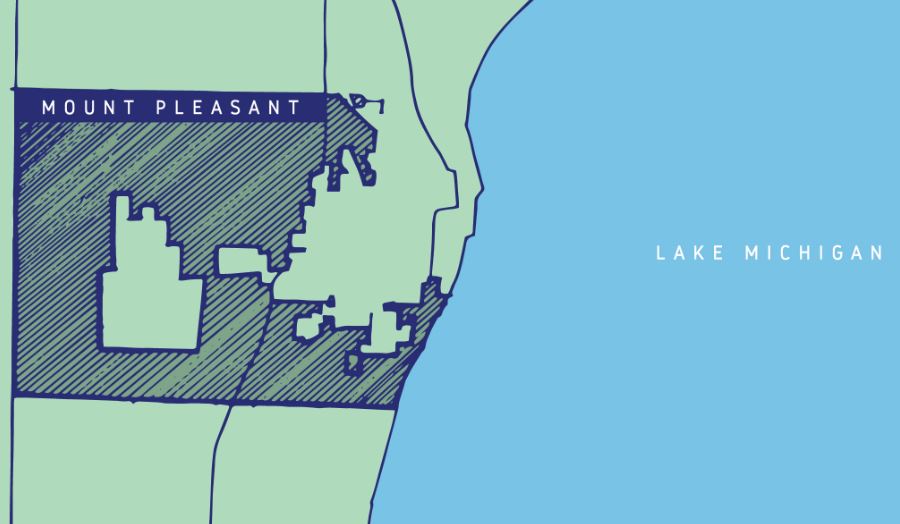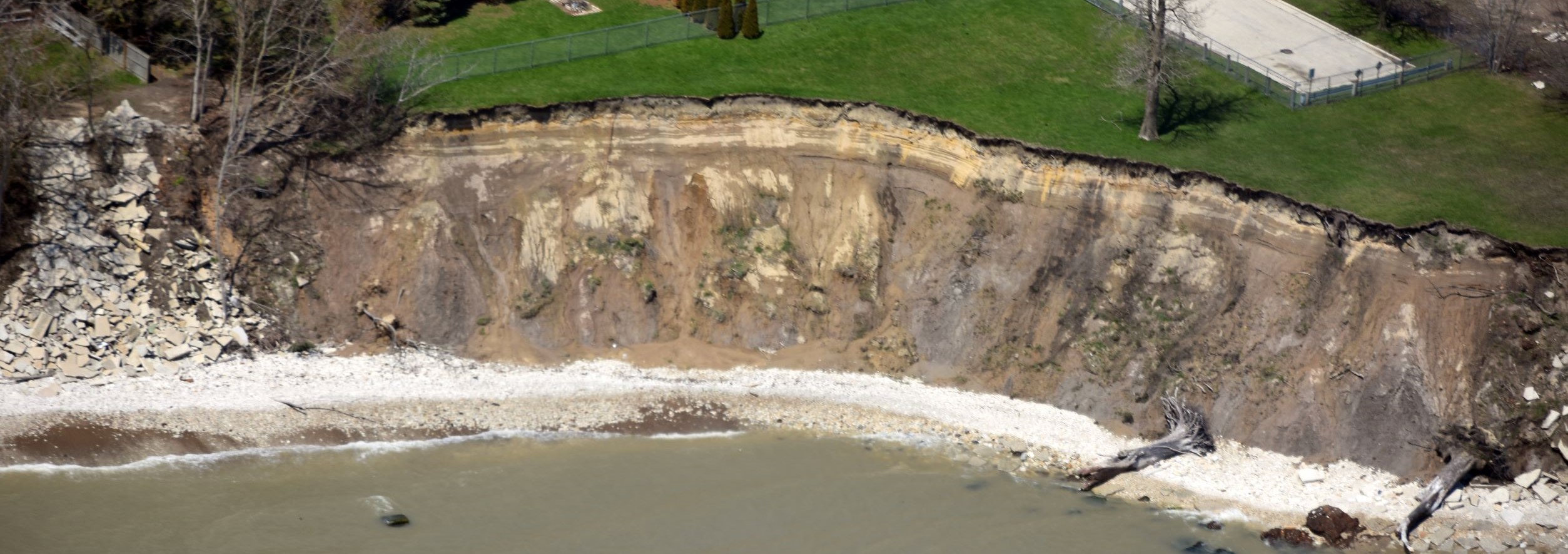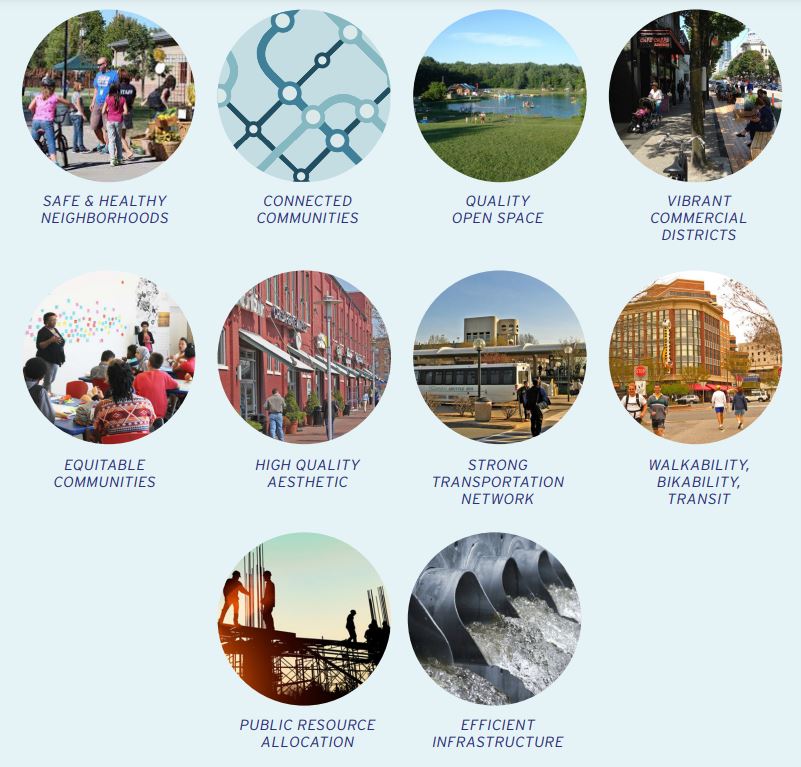
There was a need to revisit the village’s zoning code to meet the development needs of the community and protect coastal areas.
Village of Mount Pleasant Zoning Ordinance Update

Village of Mount Pleasant is located in Racine County, Wisconsin. Credit: Lakota Group
Overview
Title of Project: Village of Mount Pleasant Zoning Ordinance Update
Organization(s): Village of Mount Pleasant
Project Cost: $180,000
Funder(s): Village of Mount Pleasant
Collaborators:
- Village of Mount Pleasant:
-
- Community Development Department
- Planning Commission
- Village Board
- Public Works Department
- Building Inspectors
- Village Assessor
- Fire Department
The Coastal Resilience Issue
The Village of Mount Pleasant is a coastal municipality with approximately 2.5 miles of Lake Michigan coastline. The Village endures the impacts of changing water levels and coastal storms including shoreline erosion and bluff instability. Rising water levels between 2013 and 2020 contributed to severe erosion of coastal bluffs and threatened homes and other coastal infrastructure in the Village. Both public and private infrastructure are vulnerable to these coastal hazards.

Bluff erosion in Mount Pleasant. Credit: Wisconsin Civil Air Patrol
Vision for the Community
Mount Pleasant wants to use zoning and land use policies to provide a better guide for future growth and change in the Village.
The Need
The Village of Mount Pleasant’s zoning code, except for additions made in the 1990’s and 2000’s, remained mostly unchanged since it was originally adopted in 1972. The original code did not include coastal setback or shoreland protection ordinances, which defaulted to older, County standards before the Village incorporated.
The Village is located adjacent to Interstate-94 and incorporated in 2003. These factors have contributed to the growth of the community. Due to this growth, the Village needed to revisit its zoning code to make it more accessible, ensure that it met the development and redevelopment needs of the Village, and included protections for coastal bluff and shoreland areas.

Mount Pleasant zoning ordinance priorities. Credit: Lakota Group
The Process
In 2016, Mount Pleasant’s Community Development Department began conversations about updating the Village zoning code with the Planning Commission and Village Board.
In early 2018, the Village hired a consultant to review the existing zoning code and provide recommendations. The consultant provided recommendations for updating the Village Code’s (1) organization and format, (2) zoning districts and uses, (3) administration and procedures, and (4) general regulations. The Village staff presented those recommendations to the Plan Commission and Village Board. Following their approval, the Village staff issued a request for proposals to hire a consultant to help update the Village’s zoning code based on those recommendations.
In 2018, the Village hired a consultant, Duncan Associates, with money set aside in its annual budget. The consultant coordinated the code update and mapping project from beginning to end. In addition to the money set aside for the zoning code update project, the Village also set aside $1 million for emergency revetment projects on the Lake Michigan coastline to quickly protect rapidly deteriorating coastal public infrastructure.
This zoning code update project was an opportunity for the Village to include bluff setback and shoreland protection ordinances in the Village code to help protect infrastructure investments and public and private property.
The Village executed the updating process in three key phases.
Phase 1: Drafting and Review
Village staff worked with the consultant to draft the updated zoning code. They then shared the draft, updated zoning code with the Plan Commission, the public, and the development community for feedback. They also made the draft zoning code available online via a website created by the consultant for the project.
They used the Southeastern Wisconsin Regional Planning Commission’s (SEWRPC) Model Zoning Regulations for Lake Michigan Bluff Setbacks as the basis for their new bluff setback ordinances. While private development already occupied most of Mount Pleasant’s lakefront parcels, the Village recognized the setback ordinances would be important for future redevelopment or new construction on those parcels.
Phase 2: Public Engagement Sessions
The COVID-19 pandemic spread during the code update process. To adapt, the Village staff hosted public engagement sessions via Zoom. They hosted virtual open houses during the day and in the evening to provide opportunities for the public to learn about and provide comments on the draft code at various times.
In addition to the open houses, the Village released a 30-minute video explaining the zoning code updates so the public could watch at convenient times.
Phase 3: Public Hearing & Adoption
The Plan Commission recommended approval of the final version of the zoning code. The Village Board then held a public hearing, after which they voted to approve and codify the updated code.
What Has Been Accomplished So Far
This process took 18 months. In 2020, the Village Board adopted the updated zoning code.
Mount Pleasant’s zoning code can be found here.
Partnerships
The Community Development Department worked with other Village departments including the Public Works, Building, and Fire Departments. These departments provided technical expertise to the building code update process. For example, the Public Works Department provided feedback on bluff and shoreland setbacks and the Building Department provided input on how the State building codes interacted with allowed building types each zoning district.
The Community Planning and Development Department also worked with the Plan Commission and Village Board to set aside funding in the Village budget and initiate the zoning code update project.
Lessons Learned
- Public outreach is an important part of the code updating process
- Find opportunities to balance environmental protection and community development
- Simplify and remove outdated ordinances in the municipal code
- Utilize technical expertise of municipal staff




